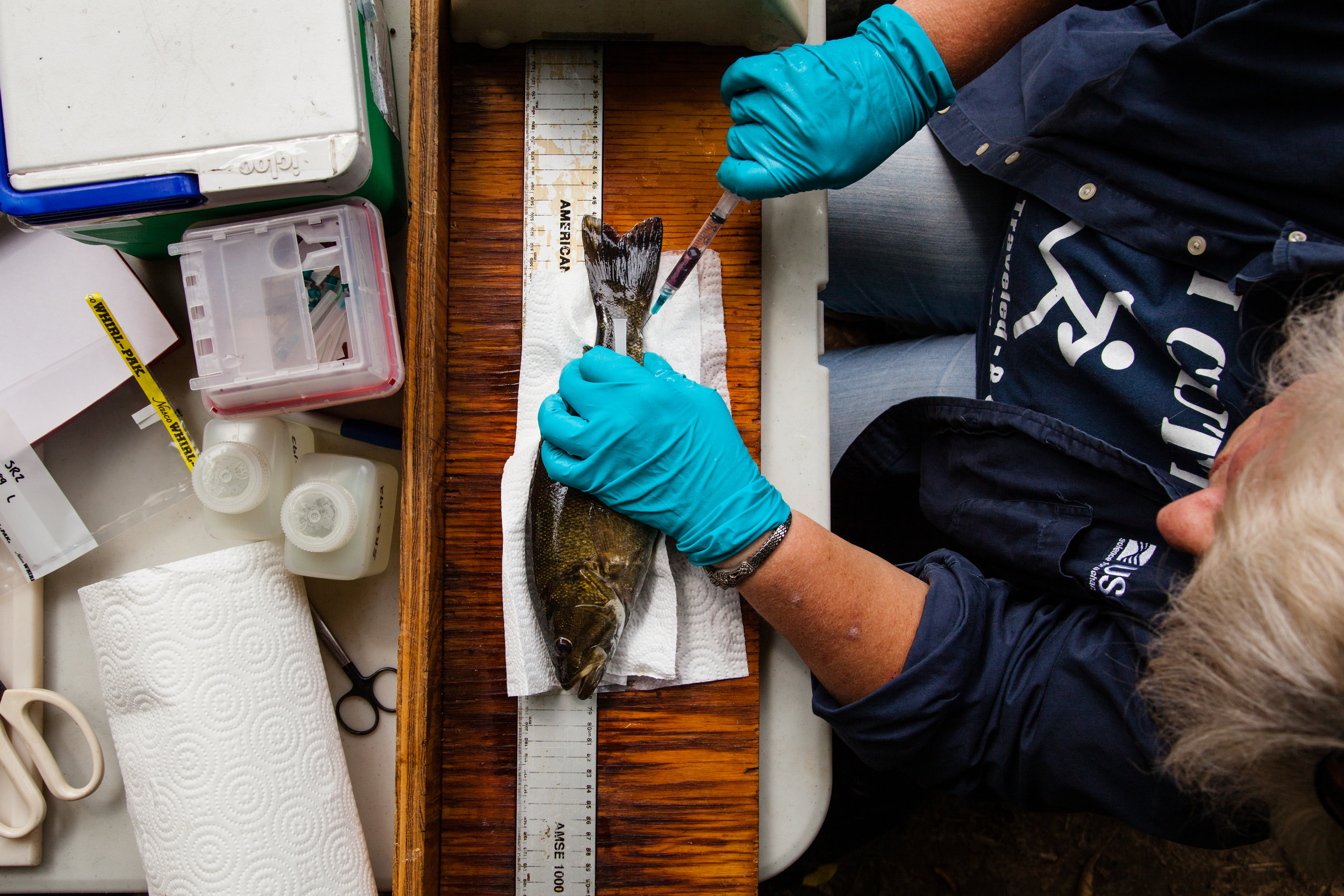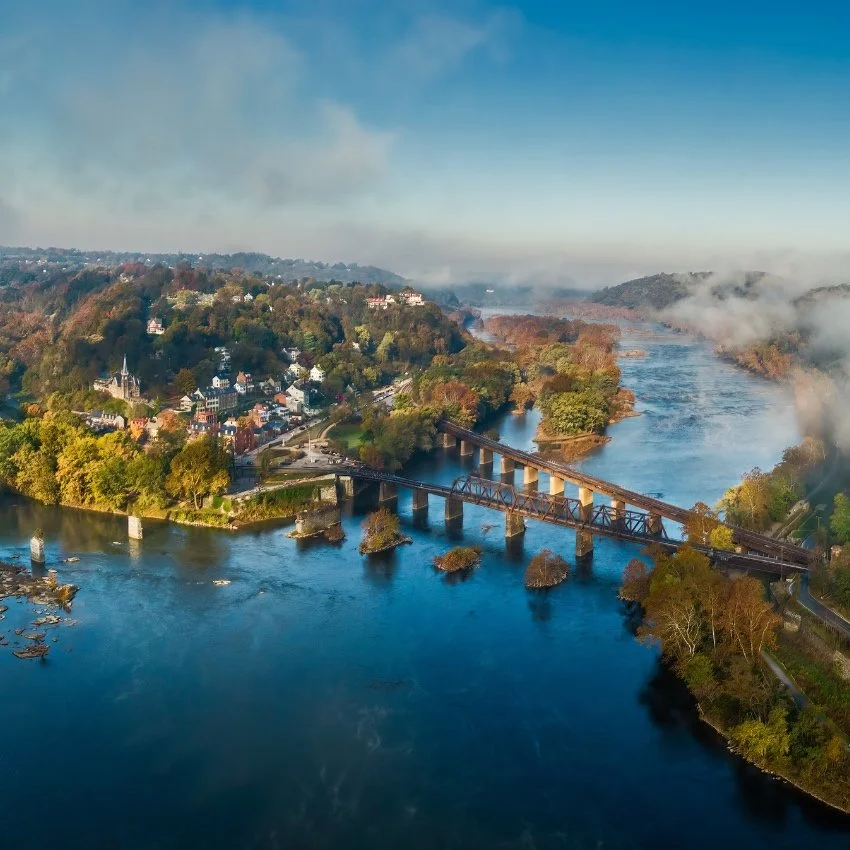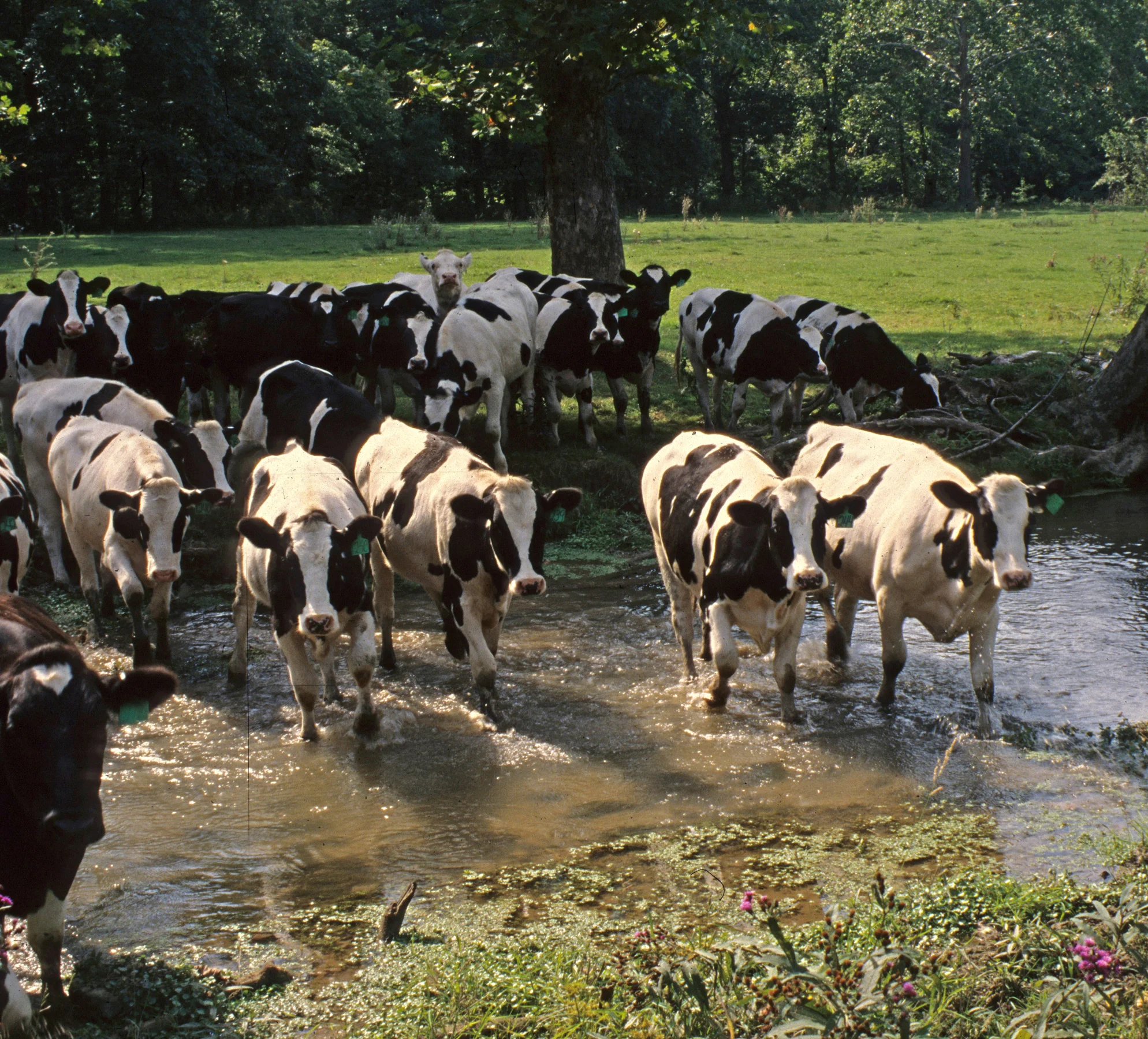3 Pollutants in the Potomac River You've Never Heard of
/Polychlorinated what? Learn the lesser known pollutants of the Potomac.
A Researcher Dissects an intersex smallmouth bass as part of a survey on the effects of chemical pollutants on fish. Photo BY Will Parson/Chesapeake Bay Program.
There’s been some serious momentum in the fight against pollution lately.
DC became one of the first cities in the country to ban straws. Maryland passed a state-wide ban of Styrofoam food and beverage containers this year. And micro-beads have long been banned in personal care products. Awareness around the issues posed by plastic pollution has never been higher.
Nutrient pollution from nitrogen and phosphorus -- two of the biggest sources of pollution to the Potomac -- is also on the decline.
But what about pollution sources you haven’t heard of? Here are the basics on three lesser known pollutants plaguing the Potomac and how you can take action.
Polychlorinated Biphenyls (PCBs)
A SiGN ON THE ANACOSTIA RIVER WARNS AGAINST FISH CONSUMPTION DUE TO CONTAMINANT LEVELS. PHOTO BY DAVE HARP/BAY JOURNAL.
What are PCBs and why are they harmful? Polychlorinated biphenyls (PCBs) are a type of legacy pollutant. PCBs are man-made chemicals that were once widely used in electronics, paints, plastics, and other industrial materials. After studies linked the chemicals to birth defects and cancer, they were banned. Over 1.5 billion tons of PCBs had already been manufactured by the time the ban went into place, and we’re still paying the price today. In fact, PCBs are one of the main reasons there are consumption advisories for locally caught fish.
How do they get in the Potomac? Many of the PCBs found in the Potomac and other local waters originated years ago. Though PCBs have not been manufactured in the United States since they were banned in 1979, they are still polluting our rivers and streams decades later because the chemicals do not break down easily. PCBs can still be found in sediment, which leeches into the water.
What can be done to remove PCBs? Removing PCBs from waterways is difficult. Options include digging up and removing the affected sediment or covering the affected sediment with a clean replacement. You can read more about recent research and action around PCBs in the Anacostia River in the Chesapeake Bay Journal.
Channel Erosion
EROSIon ALONG THE BANKS OF THE SEVERN RIVER. PHOTO BY ALICIA PIMENTAL/CHESAPEAKE BAY PROGRAM.
What is channel erosion and why is it harmful? Channel erosion is the process by which the banks (aka the channel) of a river or stream erodes away. Some degree of channel erosion occurs naturally. In fact, natural erosion can actually improve habitats. Unfortunately, much of what our local rivers and streams experience is excessive channel erosion, which can have harmful effects on water quality and wildlife.
How did it become an issue? Poorly planned development increases the amount of pavement and decreases the amount of natural land cover. These changes to the landscape prevent the land from naturally absorbing rainwater. When it rains, rainwater that would ordinarily be absorbed into the soil by vegetation instead flows over the land, overwhelms streams and creeks, and tears up the banks, carrying large amounts of dirt downstream.
What can be done to prevent channel erosion? Support river friendly development that protects green spaces and uses permeable pavements and nature-based solutions to stop runoff before it reach streams and creeks. Planting and protecting riverside trees can help stabilize riverbanks and provide a barrier of protection against rushing rainwater.
[Check out how some local stream restoration projects have addressed erosion issues with nature-based solutions.]
Endocrine Disrupting Chemicals (EDCs)
PlASTIC BOTTLES, A SOURCE OF EDCs, WASHED INTO A CREEK BY STORMWATER. Photo by MATT RATH/CHESAPEAKE BAY PROGRAM.
What are EDCs and why are they harmful? Endocrine disrupting chemicals (EDCs) are substances that can affect the body’s endocrine system, which is responsible for reproduction, growth, development, and other important bodily functions. EDCs can affect humans as well as wildlife. They are believed to be the cause of intersex fish in the Potomac and other rivers throughout the country. Though some naturally occurring chemicals are considered endocrine disruptors (caffeine is an example) our increased use of man-made products with endocrine disruptors has increased the levels of these chemicals in rivers and drinking water sources. EDCs are found in a wide variety of places, including plastics, prescription medications, personal care products, and pesticides.
How do they get in the Potomac? Because EDCs are found in such a wide variety of products, they enter local rivers and streams in many ways. Polluted runoff can carry pesticides and plastics into the Potomac when it rains. Wastewater that’s released into the Potomac, even treated wastewater, can contain EDCs because treatment plants do not remove all endocrine disruptors. Agricultural runoff is also a main source of EDCs in the Potomac.
What can be done to remove EDCs? There are a few actions you can take now to help: keep plastics and trash out of our waterways by volunteering for cleanups; advocate for enhancements to wastewater treatment facilities to local officials; reduce the use of pesticides and herbicides; and install nature-based filtration solutions that capture and filter pollution before it gets to the river.
Get local clean water and river news delivered to your inbox.
Sign up to receive our monthly River Update email.
100% private. We don’t spam.


















